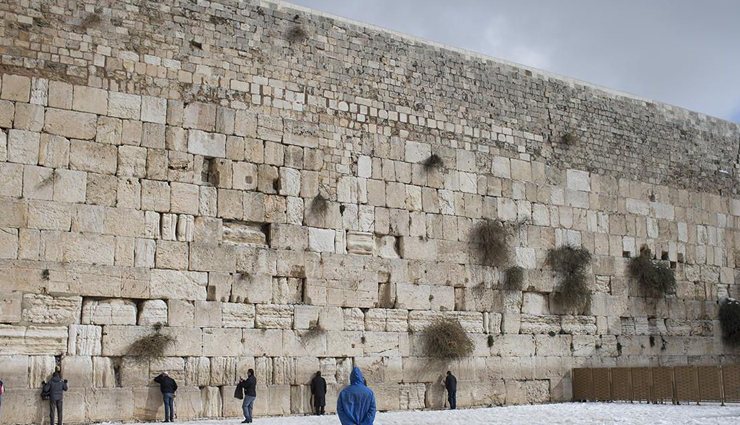5 Most Famous Walls Around The World
By: Kratika Maheshwari Fri, 11 Mar 2022 10:32:08

For a long time, especially during ancient time, walls have played an important role in marking borders and preventing enemies from invading in kingdoms and settlements. However, walls are nowadays used as memorials and state-of-the-art sculptures in addition to original functions. Below are the list of the most famous walls around the world recognized as international tourism spots.

# The Great Wall of China
The Great Wall of China was built during the Ming Dynasty (1368-1644 AD) between 220–206 BC by the first Emperor of China, Qin Shi Huang and rebuilt between the 5th century BC and the 16th century. The Great Wall of China stretching for 8,851.8 kilometers (5,500.3 miles) is one of the most famous walls in the world. Contrary to popular belief this wall has not been seen from the moon (so far) however satellites in Earth's orbit can detect its shape.

# Western Wall, Jerusalem, Israel
The Western Wall, also called the Wailing Wall, is a well-known Jewish religious destination in the world. The Western Wall, situated in the Old City of Jerusalem, was built from the end of the Second Temple period around 19 BC by Herod the Great. Nowadays, it becomes the pilgrimage location for Jews.

# Great Zimbabwe Walls, Zimbabwe
The Great Zimbabwe, constructed by indigenous Bantu people during the 11th century is 11 meters (36 ft) high extending nearly 250 meter (820 ft). In fact, the 300-year-old wall is a complex of stone ruins stretching over a large area of Zimbabwe and featuring as the greatest ancient structure in the south of the Sahara Desert. There are about 18,000 residents living nearby the Great Zimbabwe at present.

# Sacsayhuamán, Peru
Sacsayhuamán is an Inca walled complex high above the city of Cusco in Peru. The imperial city Cusco, was laid out in the form of a puma, the animal that symbolized the Inca dynasty. The belly of the puma was the main plaza, the river Tullumayo formed its spine, and the hill of Sacsayhuamán its head. There are three parallel walls built in different levels with lime stones of enormous sizes. It is suggested that the zigzagging walls represent the teeth of the puma’s head.
The boulders used for the first or lower levels are the biggest. The largest is 8.5 meter high (28 ft) and weights about 140 metric tons. The wall is built in such a way that a single piece of paper will not fit between many of the stones. This precision, combined with the variety of their interlocking shapes, and the way the walls lean inward, is thought to have helped the ruins survive the devastating earthquakes in Cuzco.

# Berlin Wall, Germany
Construction of the Berlin Wall began in 1961. It was a desperate but effective move by East Germany to stop East Berliners escaping from the Soviet-controlled East German state into the West of the city, which was then occupied by the Americans, British and French. During the Wall’s existence, around 5,000 people attempted to escape circumventing the wall, with estimates of the resulting death toll varying between 98 and 200. As the Iron Curtain cracked in 1989 hundreds of citizens began physically tearing down the concrete division. Today remnants of the Berlin Wall can be found at Bernauer Strasse and in front of the Neiderkirchnerstrasse, the former Prussian Parliament and current Berlin Parliament.





